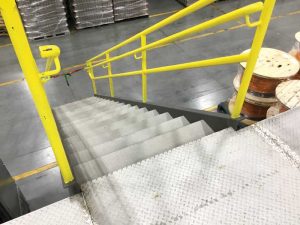
By Jeff Baker
Designing a building, whether for a residential, institutional, or a manufacturing facility, requires thoughtful planning and immense attention to detail. Architects, engineers, and specifiers strive to find a balance between structural and functional requirements while considering aesthetics and sustainability during the planning phase. Their dedication to their craft fills them with a sense of artistic and professional satisfaction; however, this feeling of pride can quickly fade away and be replaced with regret when a fatal accident occurs that could have been prevented.
In 2020, general falls were the leading cause of preventable injuries and the tragic cause of more than 42,000 preventable deaths, according to the National Safety Council (NSC).1 By understanding the role design and flooring materials play in these preventable events, specifiers can improve safety.
Defining the nature of fall, slip, and trip hazards and understanding how they happen
Understanding the physics of a slip, trip, and fall event and how it happens is the first step to applying building design principles that can help prevent these events from occurring.
- A fall is a sudden, unintended descent to the ground or other object, such as a platform or staircase. According to Safeopedia.com, 66 percent of falls occur on the same level due to a slip or trip.2
- A slip is when someone loses traction as they walk. Even when a slip does not result in a fall, the effects can have impact on the lower back and joints, depending on how the person recovers from the slip. Slips commonly occur on wet or oily surfaces, or when walking on surfaces with varying levels
of traction. - A trip occurs when someone encounters a foreign object while walking. Common causes include uneven walking surfaces, cluttered areas, obstructed views, and poor lighting.
Slips and falls commonly happen when the surface traction of flooring unexpectedly changes. The industry standard for measuring traction is called the coefficient of friction (COF), which measures how much resistance two surfaces encounter when moving across each other, such as a shoe moving across a wet floor.
COF is measured on a scale between zero to one. The closer a material comes to one, the greater its ability to prevent slips and falls. Regulatory agencies and industry safety groups have varying recommendations on COF:
- The National Floor Safety Institute (NFSI) notes that a COF of 0.4 or less is unsafe, while a COF of 0.6 or higher is considered safe.
- The Occupational Safety and Health Administration (OSHA) maintains that the COF for a walking surface should be 0.5 or higher.
- The Americans with Disabilities Act (ADA) requires walking surfaces to have a minimum COF of 0.6 for flat surfaces and 0.8 for inclines.




